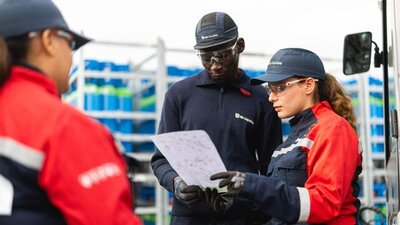As the world wakes up to the possibilities presented by this new technology, Artificial Intelligence (AI) has become a key resource to aid thinking, planning and actions. Thanks to high-quality and well-structured data combined with human intelligence, AI helps us make predictions, recommendations and enlightened decisions based on very large amounts of data. It is a valuable resource that not only enhances Air Liquide’s operational efficiency and eases employees’ work but also enables the development of innovative solutions, ultimately leading to better services for our customers and patients.
Enhancing our operations and solutions
Every day, 3.5 billion data points are collected from Air Liquide’s 500 plants, 20 million gas cylinders, and 9,900 trucks. Their analysis allows a better management of the industrial assets and drives optimization efforts. Our teams have implemented various AI-powered solutions to enhance the reliability of production units while optimizing their energy consumption and assisting dispatchers and drivers in planning gas delivery and sourcing.
500+
Air Liquide projects have already used data and AI
A valuable resource for healthcare
AI also supports our Value-Based Healthcare approach which puts people with chronic diseases at the heart of the care pathway to improve their quality of life at the best cost for the healthcare system.
Data and AI enable us to monitor sleep apnea patients, using an algorithm that predicts the risk of non-adherence of treatment among those equipped with a connected device. Our teams can thus set up the most appropriate personalized care plan for the patient. In 2023, 22,000 patients suffering from sleep apnea have started benefiting from personalized support based on the monitoring of outcomes thanks to the digital tools developed by Air Liquide, particularly in Europe, South Korea, Brazil and Australia. Next step for our AI-powered tools: predictive alerting, which will help our healthcare teams identify in advance patients who may not be able to keep up with their treatments.
In addition, with the objective to provide a better quality of life for patients, this approach combining human and digital resources also contributes to the efficiency of the healthcare system, ultimately leading to its resilience.
Baladji Soussilane
Vice President, Digital & IT at Air Liquide




